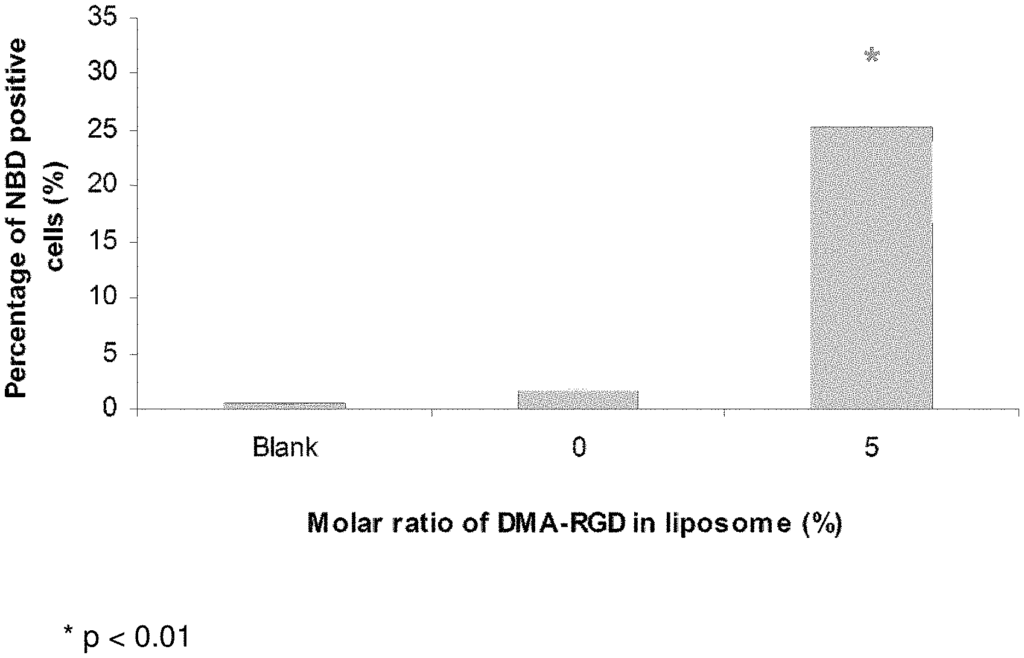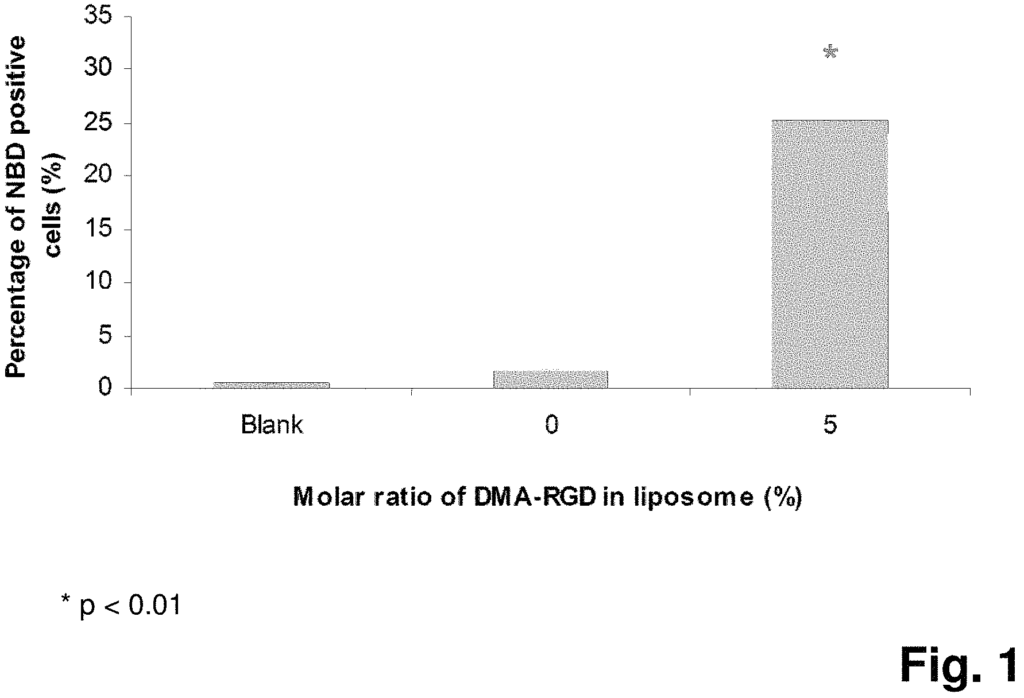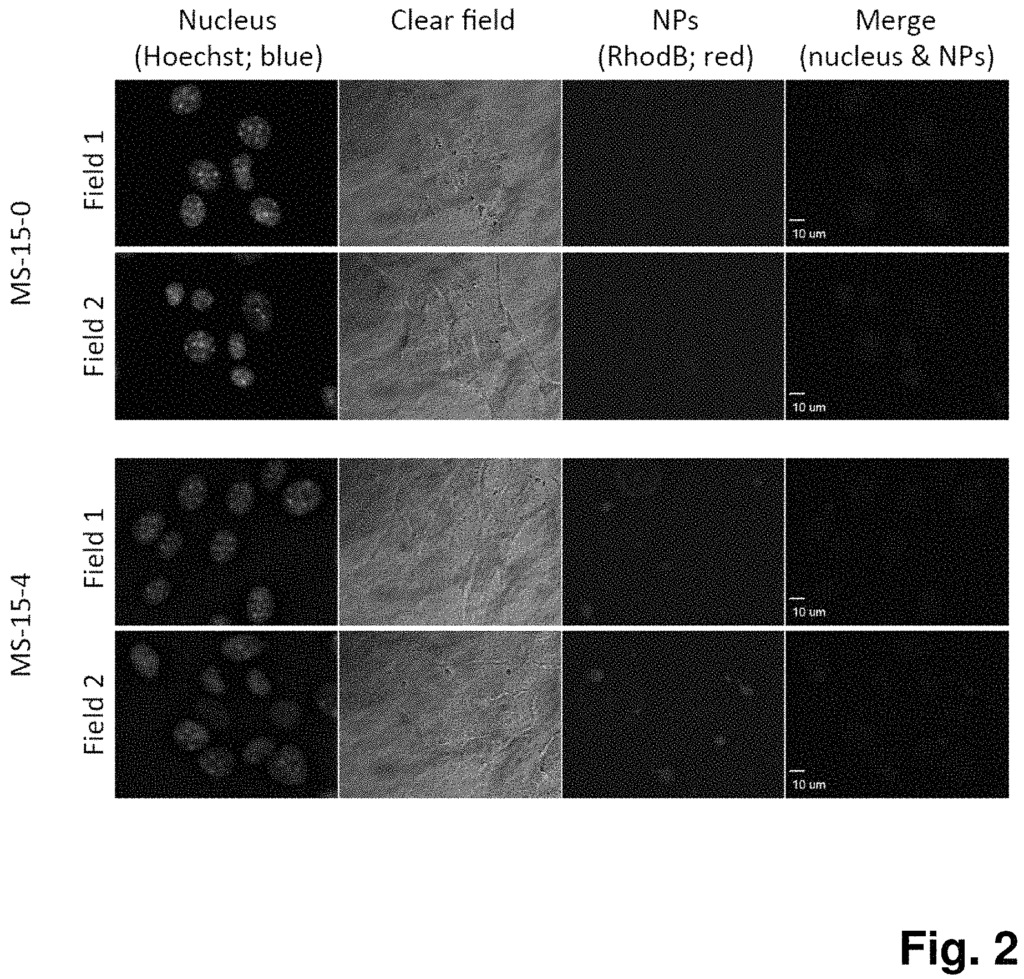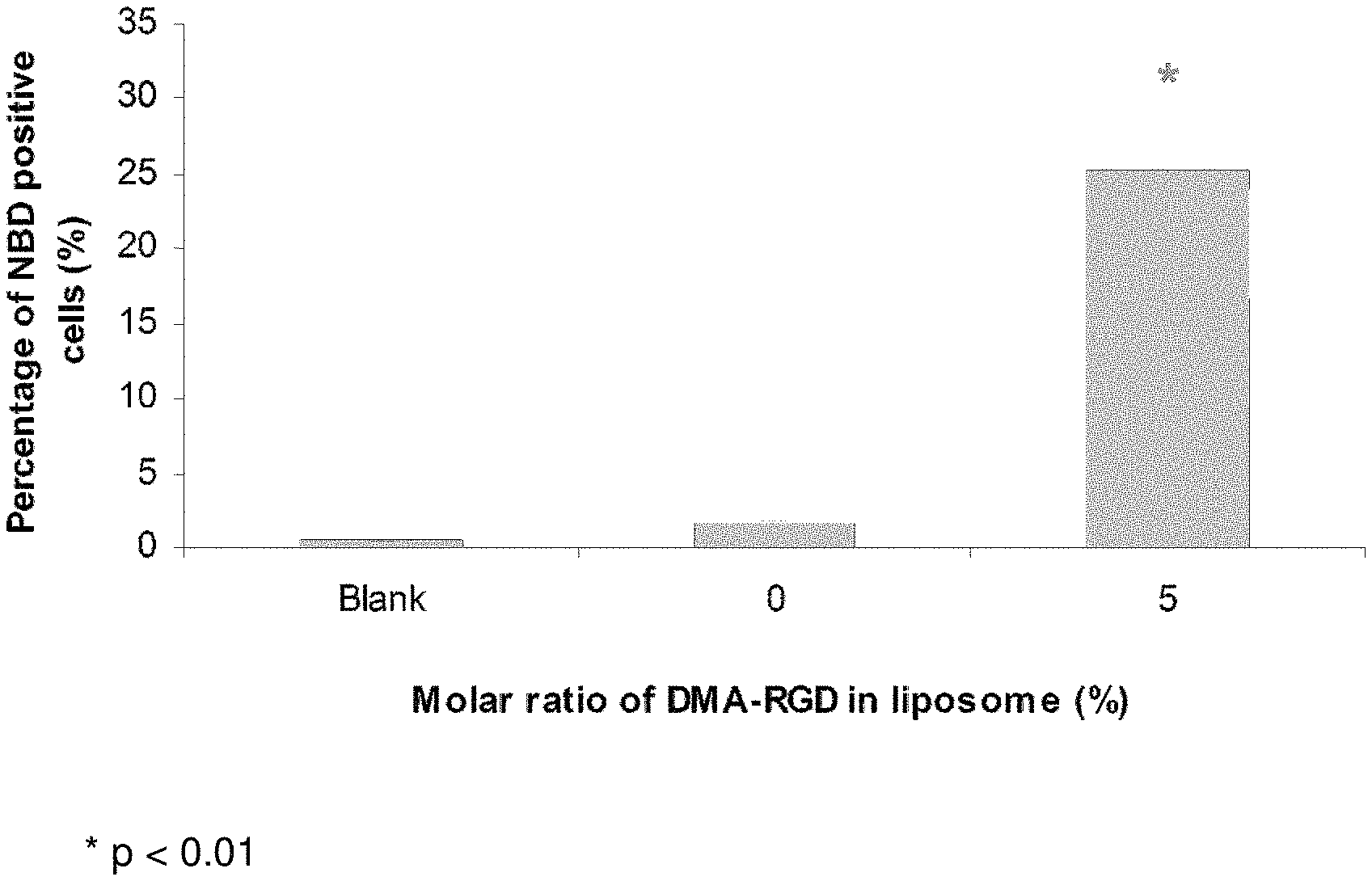Invented by Michael Platscher, Raymond Behrendt, Viola Groehn, Simone HOERTNER, Marco Passafaro, Finn Bauer, Merck Patent GmbH
One of the key areas where targeting amino acid lipids has gained significant attention is in the field of drug delivery. Lipidated peptides have shown great promise in improving the stability, solubility, and bioavailability of therapeutic drugs. By attaching a lipid moiety to a peptide, the resulting compound can easily traverse cell membranes and reach the desired target site, enhancing the efficacy of the drug.
Furthermore, amino acid lipids have also been found to possess antimicrobial properties. These compounds can disrupt the cell membranes of bacteria and fungi, making them potential candidates for the development of new antibiotics and antifungal agents. With the rise of antibiotic resistance and the urgent need for novel antimicrobial strategies, targeting amino acid lipids offers a promising solution.
In addition to drug delivery and antimicrobial applications, amino acid lipids have also found use in the cosmetic industry. Lipidated peptides have been shown to have excellent skin penetration capabilities, making them ideal for delivering active ingredients deep into the skin. This opens up new possibilities for the development of advanced skincare products that can effectively target specific skin concerns, such as wrinkles, pigmentation, and inflammation.
The market for targeting amino acid lipids is expected to witness significant growth in the coming years. As more research is conducted and the understanding of these compounds deepens, their potential applications are likely to expand further. The pharmaceutical, biotechnology, and cosmetic industries are actively exploring the use of amino acid lipids, and collaborations between academia and industry are driving innovation in this field.
However, there are still challenges that need to be addressed. The synthesis of lipidated peptides can be complex and expensive, limiting their widespread use. Additionally, the regulatory landscape surrounding these compounds is still evolving, requiring further validation and standardization.
Despite these challenges, the market for targeting amino acid lipids holds immense potential. The versatility, efficacy, and unique properties of these compounds make them attractive for various industries. As research progresses and technology advances, it is expected that amino acid lipids will play a significant role in the development of novel therapeutics, antimicrobial agents, and advanced skincare products.

The Merck Patent GmbH invention works as follows
The present invention is directed towards carrier systems that contain ether-lipids conjugated with one or more bioactive molecules and exposed on the carrier surface for use in antigen display and/or targeted delivery systems. One or more additional bioactive agents can be embedded or encapsulated within, attached to or adsorbed on the carrier system. The present invention also relates to their preparation, as well as their use in medical applications such a targeted delivery of bioactive agent to specific tissue or cells, and antigen-display systems for the study of traits, diseases, and conditions that are responsive to said bioactive agents.

Background for Targeting aminoacid Lipids
Molecular recognition” is the process of recognizing molecules, for example, between a sugar-lectin or RNA-ribosome and a receptor ligand. This principle is important for many biological systems. It is also being applied to artificially-created biological systems that are used in medical applications. Examples include artificial (micro or nano) particulate system including polymeric beads and vesicular oils, microemulsions and the like.
One example of a molecular-recognition based application is targeted delivery of diagnostic and therapeutic compounds such as antivirals, chemotherapeutics or imaging agents to specific sites. This allows to overcome limitations associated with nonspecific deliveries (such as the in vivo clearing time, potential toxicities, problems associated membrane transport of an agency and the like), and increases their effectiveness. Different recognition-based approaches have been employed to improve the delivery into intracellular environments (i.e. To exert a biological activity in a cell, compounds must be delivered to specific cell compartments. This is done by using specific transporters, which can involve the use of biological and artificial carriers. WO79/00515, and WO98/52614), as well as lipid carriers and other conjugate systems.
Lip The The Nos. 6,316,024 and 6,214,388; Allen et al., Biochim. Biophys. Acta, 1237:99-108 (1995); Blume et al., Biochim. Biophys. Acta, 1149:180-184 (1993)). Act
Any agent that selectively binds a receptor cell or tissue, to be treated or tested, may be attached to the lipid vesicle as a receptor or targeting ligand. These targeting ligands are typically attached to the surface of a lipid, or a lipid vesicle through a chain. polymeric) linker. As an example, conjugates based on folic acids have been used as a targeted approach to deliver a therapeutic compound that is useful for the diagnosis and/or treatment of a condition. This allows a reduction of the dose required of therapeutic compounds. WO 02/094185 U.S. Pat. No. No. 6,335,434, U.S. Pat. No. 5,416,016). The use of galactose and galactosamine conjugates for transporting exogenous compounds through cell membranes provides a targeted approach to treating liver diseases such as HBV, HCV or hepatocellular cancer while allowing the reduction of the required doses of therapeutic compounds. U.S. Pat. No. 6,030,954, . . . ).
Another example of a molecule recognition-based application is the use antigen display systems, which involves both presentation of?self? “Another important example of a molecular recognition based application is the use of antigen display systems which involve presentation of both?self? To generate T cell activation and modulation, or tolerance, proteins (antigens), are introduced to the immune system. The interactions between receptors and ligands in antigen-presenting system that influence the immune response are difficult to measure and complex. They depend on many factors, including ligand density, coreceptor presence, receptor ligand affinity, and surface conditions. A widely used method involved the use of naturally occurring human cell (or parts thereof), whose primary function was antigen processing. Live cell systems are ideal for simulating cell-cell interactions to induce tolerance or an immune response. However, they depend on a controlled expression of surface molecules, including possible expression of additional “costimulatory” molecules. Adhesion molecules and/or adhesion molecule on its surface membrane to a therapeutic level. “Currently, artificial systems include genetically engineered subcellular vesicles that carry molecules for antigen display and T-lymphocyte stimulation or inhibition (WO 03/039594), as well as systems based on cell-sized biodegradable microspheres-based antigen-presenting systems (WO 07/087341).
Clearly, the technologies based on molecular identification have their limitations and there is a need for an artificial carrier system that can be used in applications based on molecular detection, such as antigen delivery and targeted delivery, and includes simple and economical methods for their preparation.
The present application describes conjugates consisting of ether-lipids with one or more covalently bound bioactive ligands, as well as various carriers systems comprising these conjugates. (Optionally, the carrier system may also include one or more bioactive agents). This allows to overcome the restrictions described above.
The present invention relates to carrier systems containing ether-lipids conjugated one or more bioactive molecules for use in antigen display and/or targeted delivery systems. The bioactive ligands can be covalently bound to the ether lipids of formula I, and then exposed on the carrier system’s surface. At least one bioactive substance may be embedded or encapsulated within, or adhered to or adsorbed on the surface of a carrier system.
In one aspect, the invention is directed towards a lipidic transport system in the form of a vesicle such as a microsome or liposome, which comprises at least one conjugate lipid-ligand of formula I. This can be in combination with other co-lipids. The at least a lipid-ligand-conjugate comprises at least a ether-lipid that is covalently coupled to at least a bioactive ligand such as an antigen, a target, a therapeutic or diagnostic ligand. Optionally, a further bioactive agent can be encapsulated in the bilayer or internal void (membrane), or adhered to the surface or adsorbed on the surface. In certain embodiments, the vesicle can be a liposome (or micelle).
In a second aspect, the invention relates to a nanoparticulate system consisting of a lipid coated particle with an internal void, or solid core. The particle is coated with a minimum of one lipid-ligand-conjugate of formula I. Optionally, the coating may be in combination with additional co-lipids. The at least a lipid-ligand-conjugate of formula I consists of at least ether-lipids which are covalently bound to at least a bioactive ligand such as an target ligand (antigen), a therapeutic or diagnostic ligand (target ligand) and a diagnostic ligand. In some embodiments, the nanoparticulate is a lipid coated nanoparticle or nanosphere. Optionally, at least one additional bioactive agent can be encapsulated within the internal void of the solid core or embedded therein.

The invention also relates to lipid-ligand conjugates according to formula 1, which comprise an ether lipid with at least two ether linked hydrocarbon chains, and a headgroup that has a straight-chain short amino acid having up to six carbon atoms, and up to three sites for coupling to which a bioactive ligand can be covalently attached.
The lipid-ligands conjugates are related to a compound with general formula I
whereinnY is O, N, S, or a covalent group;nS1, S2, S3 are independently a covalent group or spacer group;nX1,X2,X3 are independently H or a ligand groups,nL represents a group of the formula (a).
R1 is H or a set of formulae? (CH2)2?ORb1,\nrepresents H or a group of formula ? (CH2)2?ORb2,nR2 is H or a formula group?CH2?ORc,nR2? This represents H, or a formula group?ORd or?CH2ORd.nR3 is H or group formula ‘ORe or? R3 represents H or a group of formula? (CH2)3-ORe: “Ra, Rb1, Rab2, Rc and Rd represent independently a straight or branched hydrocarbon chains,nm can be 1, 2 or 3nwith the condition that at least R1, R1? R2, R2′, or R3’ is not H, and at least X1, X2, or X3 are ligand groups.
In specific embodiments, the ligand is either a targeting ligand, an antigenic group or a therapeutic or diagnostic ligand.
Preferably the targeting ligand comprises a pteroic-acid derivative, polypeptides, proteins, or carbohydrates, and the antigenic ligand comprises a peptide or protein.
The invention also relates to the use of carrier systems as a system for delivering drugs, displaying antigens, or a diagnostic system. Kits for preparing carrier systems containing lipids from the invention are also provided, as well as pharmaceutical formulations that contain these carrier systems.
In other aspects, the present invention is directed to methods for treating or diagnosing a disease that include administering a sufficient amount of a carrier of the invention.
In yet another aspect, the present invention also relates to methods for modulating immune responses that include administering an effective quantity of a carrier of the invention.
Other aspects of the invention are methods for transporting a biologically-active compound across a barrier and/or delivery methods of a biochemically-active compound into a cellular using the carrier systems of invention.
The present invention provides carriers systems that contain at least one etherlipid and at most one bioactive ligand conjugated with said etherlipid to form the lipid-ligand-conjugate of the invention. The present invention can use any carrier system that is formed or coated with lipid ligand conjugates (general formula I) optionally combined with other lipidic matrix compound (or co-lipids). A carrier system according to the present invention typically consists of a microparticle or nanoparticle material, in various shapes and sizes, including spheres or vesicles with an interior void, particles having a solid core or rods, tubes or clusters. In certain embodiments, a carrier according to the invention can be a lipidic system such as a microcelle or liposome. The lipid-ligand is optionally forming the lipid walls of the vesicle, together with the other matrix lipids. In other embodiments, the carrier system of the invention can be a vesicle, which is made up of nanoparticles such as nanoparticles, nanospheres, nanoclusters, nanotubes, polymeric beads, etc., in which the lipid-ligand is coated on the surface. According to the invention, depending on the nature of the carrier and its intended use, one or more agents bioactive may be embedded or encapsulated within the carrier or adhered to the surface.
Click here to view the patent on Google Patents.

Leave a Reply